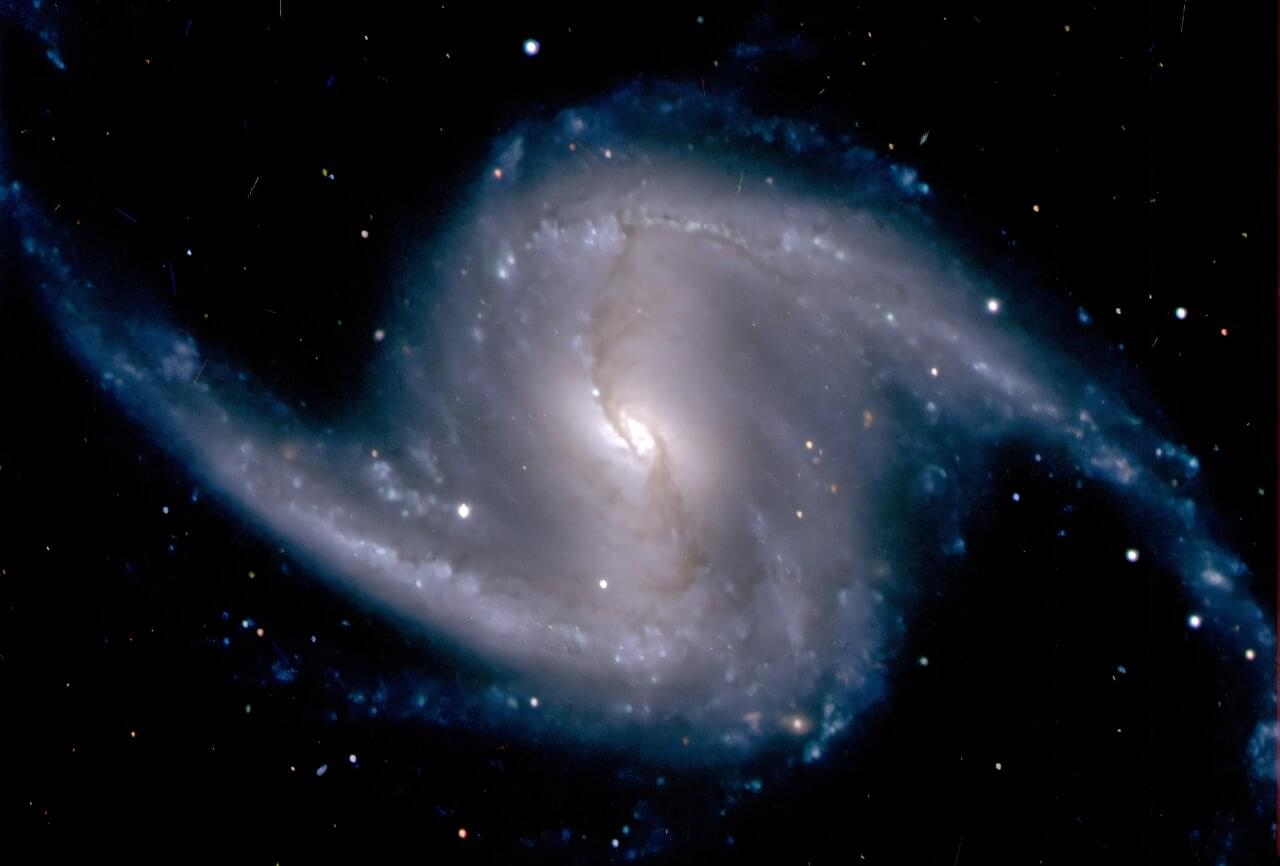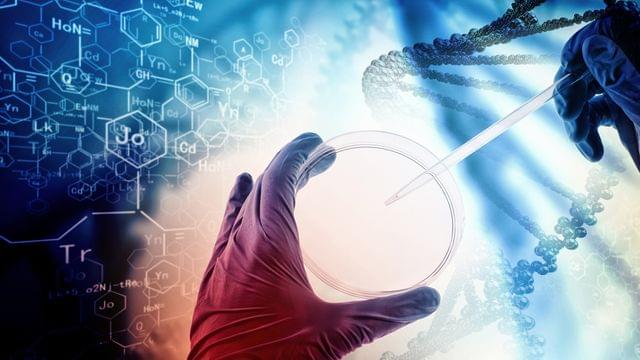AI is not only accelerating discovery in materials science, it is benefiting from the development of new materials.



Dark energy makes up roughly 70% of the universe, yet we know nothing about it.
Around 25% of the universe is the equally mysterious dark matter, leaving just 5% for everything that we can see and touch—matter made up of atoms.
Dark energy is the placeholder name scientists have given to the unknown force causing the universe to expand faster and faster over time.

Physicists are tapping into the strange world of quantum sensors to revolutionize particle detection in the next generation of high-energy experiments.
These new superconducting detectors not only offer sharper spatial resolution but can also track events in time—essential for decoding chaotic particle collisions. By harnessing cutting-edge quantum technologies originally developed for astronomy and networking, researchers are making huge strides toward identifying previously undetectable particles, including potential components of dark matter.
Unlocking the universe with particle colliders.

IN A NUTSHELL 🚀 The ACES mission by the European Space Agency aims to redefine time measurement in space with unmatched precision. ⏱️ ACES will test Einstein’s theories of relativity by measuring how time bends, slows, and stretches under cosmic conditions. 🔬 Using advanced atomic clocks like PHARAO and SHM, ACES will explore fundamental constants

Born and brought up in East Germany, Professor Franka Kalman is a much-respected figure in the field of separation sciences. Following undergraduate and postgraduate studies at the Technical University Budapest, Hungary, where she learned about the then emerging technique of high performance liquid chromatography (HPLC), she applied that knowledge to complete her PhD looking at the analysis of novel opioid peptides at Martin Luther University Halle, Germany.
Her postdoctoral studies in the lab of the late, great Professor Csaba Horvath at Yale University, a placement that by all accounts provided both a grounding and springboard for her future career, were to be transformative and the techniques she developed there have gone on to be game-changing in the world of pharmaceutical development, analysis and quality control. Work for which she was recognized in 2012, when she was presented with the prestigious CEPharm Award from the Californian Separation Science Society (CASSS) for significant contributions to the practical application of capillary electrophoresis (CE) in the biotechnology and pharmaceutical industries.
After her time as a postdoc, she spent 13 very successful years in the pharmaceutical industry, working at the interface between science and industrial applications.
“Welcome back to our channel! Today, we’re diving into an extraordinary and futuristic topic: Neural Enhancement: Human 2.0. Imagine a future where AI-driven technologies can enhance human brain functions, creating a new version of humanity with unparalleled cognitive and physical abilities. Let’s explore this revolutionary concept! 🧬🧠 #Science #Tech”
Segment 1: the concept of neural enhancement.
“Imagine a world where humans can enhance their natural abilities through advanced technology. 🧠✨ Neural enhancement uses AI and neural interfaces to boost cognitive functions, improve memory, and enhance physical capabilities, creating ‘Human 2.0.’ 🌟 #NeuralEnhancement #TechInnovation”
Segment 2: how neural enhancement works.
“So, how does neural enhancement work? 🤖🧬 Using brain-computer interfaces (BCIs), neural implants, and AI algorithms, scientists can directly interact with the brain’s neural networks. These technologies can stimulate and enhance brain functions, improving everything from memory and learning speed to physical coordination and strength. 🌐✨ #AI #NeuroTech”
Nanobots aren’t just microscopic machines—they could come in countless shapes and sizes, each designed for a unique purpose. From medical nanobots that repair cells to swarming micro-robots that build structures at the atomic level, the future of nanotechnology is limitless. Could these tiny machines revolutionize medicine, industry, and even space exploration? #Nanotech #Nanobots #FutureTech #Science #Innovation …
Recent rapid progress in artificial intelligence has prompted renewed interest in the possibility of consciousness in artificial systems. This talk argues that this question forces us to confront troubling methodological challenges for consciousness science. The surprising capabilities of large language models provide reason to think that many, if not all, cognitive capabilities will soon be within reach of artificial systems. However, these advancements do not help us resolve strictly metaphysical questions concerning substrate-independence, multiple realizability, or the connection between consciousness and life. Ultimately, I suggest that these questions are likely to be settled not by philosophical argument or scientific experimentation, but by patterns of interactions between humans and machines. As we form valuable and affectively-laden relationships with ever more intelligent machines, it will become progressively harder to treat them as non-conscious entities. Whether this shift will amount to a vindication of AI consciousness or a form of mass delusion remains far from obvious.
“Metaphysical Experiments: Physics and the Invention of the Universe” by Bjørn Ekeberg Book Link: https://amzn.to/4imNNk5
“Metaphysical Experiments, Physics and the Invention of the Universe,” explores the intricate relationship between physics and metaphysics, arguing that fundamental metaphysical assumptions profoundly shape scientific inquiry, particularly in cosmology. The author examines historical developments from Galileo and Newton to modern cosmology and particle physics, highlighting how theoretical frameworks and experimental practices are intertwined with philosophical commitments about the nature of reality. The text critiques the uncritical acceptance of mathematical universality in contemporary physics, suggesting that cosmology’s reliance on hypological and metalogical reasoning reveals a deep-seated faith rather than pure empirical validation. Ultimately, the book questions the limits and implications of a science that strives for universal mathematical truth while potentially overlooking its own inherent complexities and metaphysical underpinnings. Chapter summaries:
- Cosmology in the Cave: This chapter examines the Large Hadron Collider (LHC) in Geneva to explore the metaphysics involved in the pursuit of a “Theory of Everything” linking subatomic physics to cosmology.
- Of God and Nature: This chapter delves into the seventeenth century to analyze the invention of the universe as a concept alongside the first telescope, considering the roles of Galileo, Descartes, and Spinoza.
- Probability and Proliferation: This chapter investigates the nineteenth-century shift in physics with the rise of probabilistic reasoning and the scientific invention of the particle, focusing on figures like Maxwell and Planck.
- Metaphysics with a Big Bang: This chapter discusses the twentieth-century emergence of scientific cosmology and the big bang theory, shaped by large-scale science projects and the ideas of Einstein and Hawking.
- Conclusion: This final section questions the significance of large-scale experiments like the JWST as metaphysical explorations and reflects on our contemporary scientific relationship with the cosmos.
#Physics.
#Cosmology.
#Universe.
#Science.
#Metaphysics.
#PhilosophyofScience.
#JWST
#LHC
#BigBangTheory.
#DarkMatter.
#DarkEnergy.
#SpaceTelescope.
#ParticlePhysics.
#HistoryofPhysics.
#ScientificInquiry #scienceandreligion #meaningoflife #consciousness #universe #god #spirituality #faith #reason #creationtheory #finetuninguniverse #astrophysics #quantumphysics #intelligentdesign #cosmicconsciousness #reality #Consciousness #QuantumPhysics #Universe #Nonlocality #QuantumEntanglement #CosmicInformation #ScienceOfMind #NatureOfReality #Spirit #BigLibraryHypothesis #NLSETI #QuantumBrain #Multiverse #InformationTheory #ExtrasensoryPerception #SciencePhilosophy #deepdive #skeptic #podcast #synopsis #books #bookreview #ai #artificialintelligence #booktube #aigenerated #history #alternativehistory #aideepdive #ancientmysteries #hiddenhistory #futurism #videoessay
Main episode with Michael Levin: https://www.youtube.com/watch?v=2aLhkm6QUgA&t=3255s.
As a listener of TOE you can get a special 20% off discount to The Economist and all it has to offer! Visit https://www.economist.com/toe.
Join My New Substack (Personal Writings): https://curtjaimungal.substack.com.
Listen on Spotify: https://tinyurl.com/SpotifyTOE
Become a YouTube Member (Early Access Videos):
https://www.youtube.com/channel/UCdWIQh9DGG6uhJk8eyIFl1w/join.
Support TOE on Patreon: https://patreon.com/curtjaimungal.